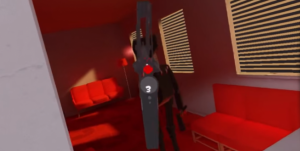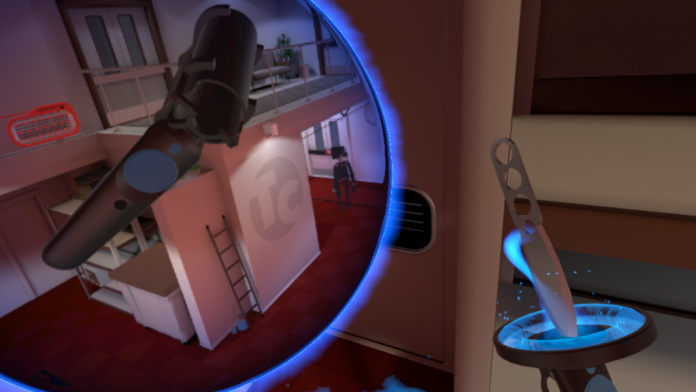Hands down, there have been countless people who have thought the portal mode of locomotion would be incredible to try out in real life, and Budget Cuts has the closest answer to this. It appears that many people had questions on how Neat Corporation tackled the hurdle of how to avoid motion sickness or uncomfortable gameplay while using the portal system in Budget Cuts, and Neat Corp’s Joachim Holmer, Co-Founder of the studio, goes through the design process point by point.
The problem of motion sickness was identified quickly, with Holmer explaining “Early on, we knew that that we didn’t want it to cause any sort of motion sickness. Motion sickness could be an entire post of its own, but, long story short — we can’t accelerate the player in the game, unless they also feel that acceleration in reality.” From this, there were a number of ways to go about it.
First, point-and-click was looked at, but there were a few reason as to why it wasn’t the best mode to use: there’s no natural speed limiter, meaning if you press the button over and over to move quicker it can still trigger motion sickness; there’s no natural distance limiter, meaning you could aim miles away and teleport unnaturally; it’s not believable; positioning is inaccurate, and the transition is described as jarring.
The studio took steps to find a new way to implement point-and-click, and references the movements in The Unreal Tournament series with the use of the Translocator, which teleports you to where you throw a small beacon – it still didn’t satisfy most of the criteria that was set out from regular transporting.
Although this isn’t the mode used, it is described as the reason why Neat Corp used the portal system.

“When the beacon lands, we open up a portal in your hand. The inside of the portal shows what it would look like if you were to stand at the teleport beacon. Meaning, if you look inside the portal and teleport, nothing inside the portal is changed when you press the button to teleport, because it was already showing the destination viewpoint, while the outside is then of course no longer showing where you teleported from.”
The player can now see where they are going to be positioned, but there were still a couple of creases to be ironed out in terms of making the transition from one location to the other smooth. The points listed to consider were being killed mid-transition, which was solved by making actions immediately effective at the destination; and the time it takes to transport, which was solved by “slerping it toward the direction you’re facing” so there is a consistent transition.
There is, of course, more detail in the blog itself, and it is said that there will be more to come: “I’ll probably make a more technical breakdown on how we created the portal itself at some point, if you’re interested!”
For more on the latest blogs from developers, as well as all the news, features, and updates in the world of VR, check back with VRFocus.















